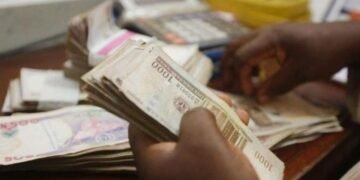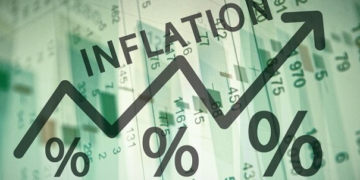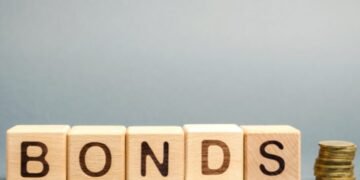The coronavirus pandemic has led to the worst GDP slump in American history as most of the country were under strick lockdown in April in a bid to stop the spread of the virus.
Real gross domestic product (GDP) decreased at an annual rate of 32.9 percent in the second quarter of 2020, according to the “advance” estimate released by the Bureau of Economic Analysis. In the first quarter, real GDP decreased by 5.0 percent.
This is the worst number in records dating back to the 1940s. Although is was better than the Economists expectation of roughly 35% annualized drop, according to Bloomberg data.
The shut down in April, brought activity to a near-halt in the U.S. Although, states started to reopen in May and June, it wasn’t enough to undue the damage of the lockdowns.

Current‑dollar GDP decreased 34.3 percent, or $2.15 trillion, in the second quarter to a level of $19.41 trillion. In the first quarter, GDP decreased 3.4 percent, or $186.3 billion
According to the Bureau of Economic Analysis, “the GDP estimate released today is based on source data that are incomplete or subject to further revision by the source agency (see “Source Data for the Advance Estimate” on page 2). The “second” estimate for the second quarter, based on more complete data, will be released on August 27, 2020”
Read also; Breaking: NASA Perseverance Rover blasts off to Mars to seek signs of Ancient Life
Personal Income and Outlays
Current-dollar personal income increased $1.39 trillion in the second quarter, compared with an increase of $193.4 billion in the first quarter. The increase in personal income was more than accounted for by an increase in personal current transfer receipts (notably, government social benefits) that was partly offset by declines in compensation and proprietors’ income.
Disposable personal income increased $1.53 trillion, or 42.1 percent, in the second quarter, compared with an increase of $157.8 billion, or 3.9 percent, in the first quarter. Real disposable personal income increased 44.9 percent, compared with an increase of 2.6 percent.
Personal outlays decreased $1.57 trillion, after decreasing $232.5 billion. The decrease in outlays was led by a decrease in PCE for services.
Personal saving was $4.69 trillion in the second quarter, compared with $1.59 trillion in the first quarter. The personal saving rate—personal saving as a percentage of disposable personal income—was 25.7 percent in the second quarter, compared with 9.5 percent in the first quarter.
Going forward, Economists surveyed by Bloomberg expect that the economy will grow at an 18% annualized rate in the third quarter. Even though that’s a record positive jump, it would still leave GDP far below pre-pandemic levels.
Written by;
Ifunanya Ikueze
























































